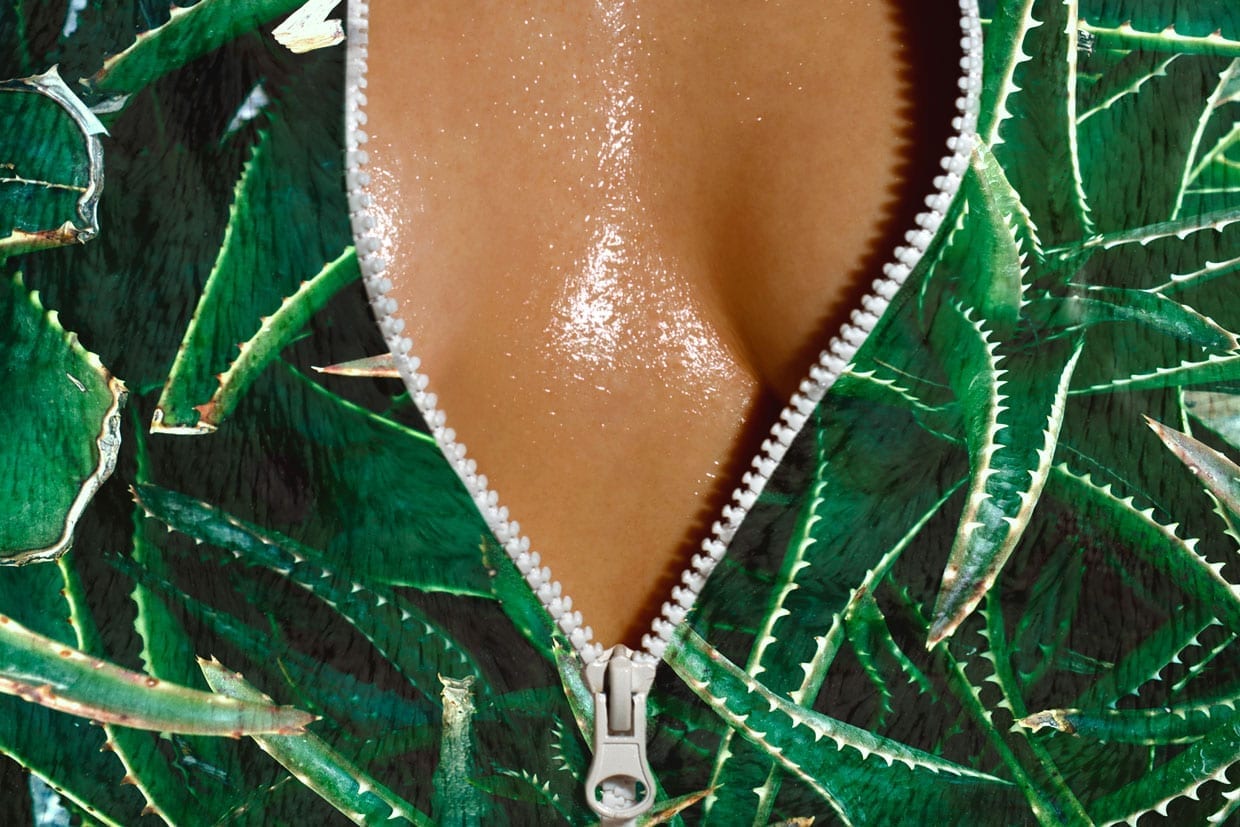Sweating is one of the best things you can do for your body. A tough (or even gentle) workout class can promote mental clarity, create better circulation and blood flow, improve sleep quality and boost energy levels. And, the perspiration that comes with it is the body’s way of releasing some toxins that gets in the way of a healthier you.
“Scientifically, obviously there are a ton of benefits [to sweating] in terms of longevity and reducing the risk of chronic disease … you move your body and you treat it well so [that] you can live longer. That is my ultimate benefit,” says Shauna Harrison, a self-described yogi who holds a doctorate in public health. Harrison ran the #sweataday challenge on Instagram for four years, encouraging people to get out and move.
But while sweating is a plus side to working out, it can wreak havoc on the skin if left in contact for too long. Many of us are guilty of heading to a workout class in tight-fitted yoga pants…and running errands post-sweat in said pants. “Tight clothes don’t let your skin breathe, provoking a breakout,” says Debra Jaliman, M.D., a board-certified dermatologist in New York City. Since sweat helps push impurities out of the skin’s pores, wearing tight-fitted clothing (or even a heavy foundation on your complexion) can make it a lot easier for blemish-causing bacteria to get into the skin and cause acne on the body.
Blemishes are not the only downside to staying in your sweaty workout clothes for too long. Similar to going sans socks in a pair of slip-on sneakers, sweaty workout clothes can put the skin at risk of a rash. Bacteria and fungus love the dark, moist environment created by sweaty yoga pants, sports bras and other tight-fitting garments. That combined with the amount of friction some outfits create can make the skin more prone to rashes — or yeast infections. Yeast occurs naturally all over the body and, like bacteria and fungus, it thrives in dark, warm, moist areas — particularly in the crevices of your skin folds. Should this occur, a yeast infection in the form of an itchy, uncomfortable red rash could appear on the surface of the skin.
Follow these tips and tricks for healthy skin while on the way to a healthier you.
https://www.instagram.com/p/BoJUoNjl3hp/
Cleanse
“There are certain things you have to be careful of. Of course, anytime you put your face on anything, like a yoga mat or towel … you are running the risk,” says Harrison. “Even if I don’t wash my face, I definitely rinse it off.”
Rinsing the body is one of the best ways to get rid of the toxins and gunk released during a sweat sesh. Jaliman suggests using a body wash formulated with salicylic acid or benzoyl peroxide as these ingredients help keep blemishes at bay. Salicylic acid breaks down excess oil and keratin to unclog pores and helps regulate the skin’s natural exfoliation process. That said, if you work out every day, it is best to only wash with these ingredients once or twice a week, as they could have a drying effect on the skin. In between uses, you can switch to a gentle, moisturizing body wash to get squeaky clean without sacrificing supple skin.
If you can’t shower, wiping your body down with a moist towelette — such as a facial cleansing wipe formulated with micellar water — can help hold you over and ensure less potential for breakouts.
It is all about “trying to keep your skin clean and protected,” says Harrison.
Exfoliate
If you frequently rock tight-fitted workout pants, regular exfoliation should be in your weekly routine. Because these types of garments trap sebum, dirt and dead skin cells to the hair follicles, it can create blemishes, bumps and rough-feeling skin. According to Jaliman, exfoliating is a great way to keep pores unclogged. She suggests using “a gentle exfoliating scrub with [blemish-fighting] ingredients.” Doing so can help to reduce the amount of dead skin that clogs pores.
Think about the clothes
When it comes to the side effects of sweaty workout clothes, wearing loose-fitted garments can help lessen the blow. However, if tights are your yoga pant preference, there are other ways to protect against the potential side effects. “Breathable fabrics help the sweat to evaporate instead of staying trapped in, such as when you wear less breathable fabrics,” says Jaliman. When shopping for a pair of breathable workout pants, look for styles made from sweat-wicking fabrics such as bamboo, nylon, spandex and wool.
https://www.instagram.com/p/Bg1ZeCpnGtK/
If showering after an exercise class or workout is not feasible, changing out of the clothes you sweat in can make the world of a difference. At the very least, a fresh pair of clothes can allow the skin to breathe better and help remove some of the toxins that your body released during your workout from the surface of the skin.
… and about the location
Each workout is different, so your skin routine might adapt for each. “Wearing sunscreen is really important outside … I run outside a lot, I always make sure I have sunscreen on my face,” says Harrison. Make sure to look for water-resistant sunscreen if you plan on sweating. While it won’t be sweat proof, it may remain more effective during your workout— but remember, you must reapply as it only remains resistant for a certain period of time before sweat or water will begin to break it down.
https://www.instagram.com/p/BpmdMQ9gscR/
Don’t Forget the Scalp
While worrying about the face or back acne, you might overlook other areas of the body that are just as affected. “For me, my hair is almost always covered in sweat,” says Harrison. “So that to me is something else that I have to be really careful of.” If dry shampoo is not an option — Harrison does not use it — look for other ways to help the scalp. During the workout, try out a sweatband to absorb the sweat at the hairline — and keep it from falling in your face. At home, Harrison uses Aquis and has found success. Or, try a scalp detox. “I do think that [scalp detox] that’s kind of the direction we’re going to have to go in order to protect our scalp,” she says.
Additional reporting by Drew Carlos.
We only recommend products we have independently researched, tested and loved. If you purchase a product found through our links, Sunday Edit may earn an affiliate commission.
Editor’s note: This article has been updated since its original publication in February 2019.








